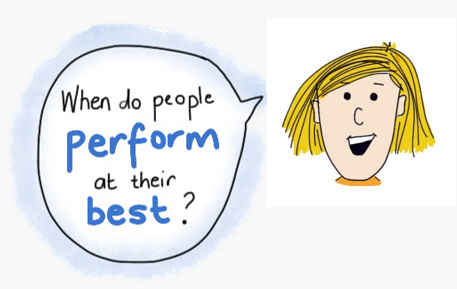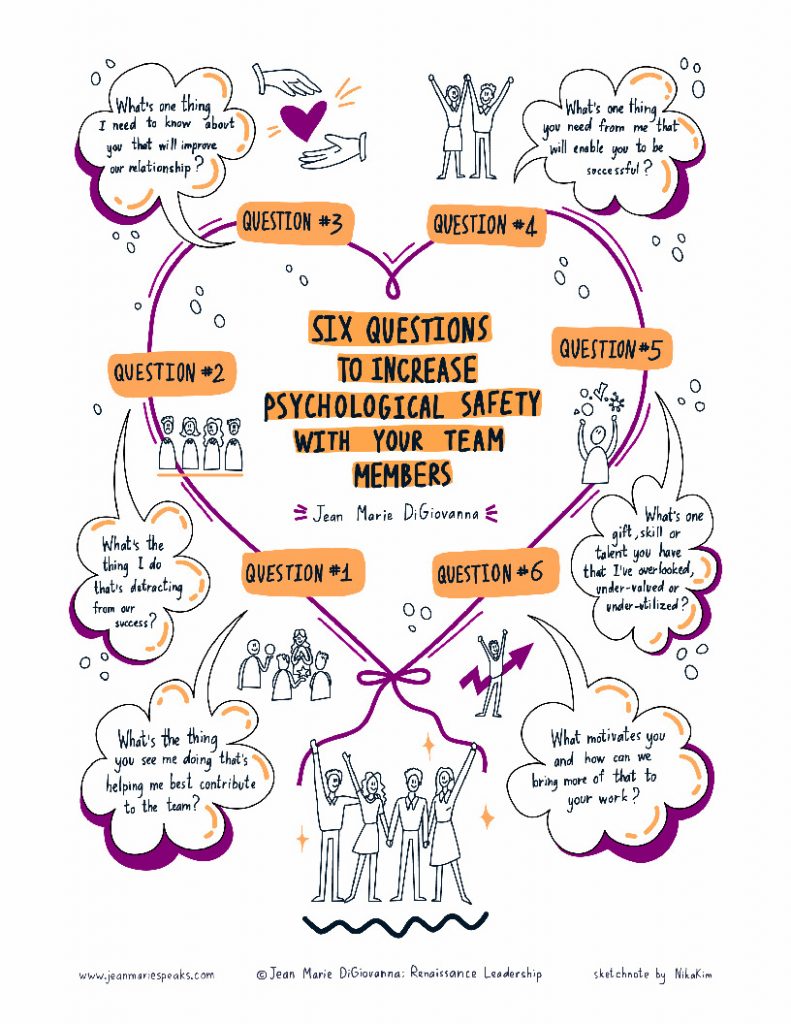6 questions to increase psychological safety with your team members
Our Discovery in Action® Leadership Circles participants and alumni will be very familiar with this simple question – When do people perform at their best?

A deep understanding of the conditions that create a climate where people can really thrive and flourish is one of the most important things a leader needs to identify! Once these beliefs about climate conditions are clear, the next step for a leader is to identify the personal leadership actions and behaviours that make a positive contribution to each of those conditions. Then they need to actively work to determine their personal leadership impact; to enhance and tweak those actions and behaviours as the context evolves.
Much has been written about one of the most fundamental conditions needed for high performing teams – TRUST! Patrick Lencioni shares that an absence of trust is the first dysfunction of a team failing to flourish: “Trust is the foundation of good teamwork”. For trust to really exist, there must be a willingness for team members to be completely vulnerable with one another; to have confidence that the intention of their team members is good. They need a confidence that no one will be punished or humiliated for speaking up with ideas, asking questions, sharing concerns, or coming clean on mistakes. This is often known as psychological safety.
In our post ‘Innovation and Shame‘, prompted by reading Brene Brown’s Daring Greatly, we shared that “one of the key roles of leaders is to create an environment where people feel they belong and are fully accepted by their colleagues.” The post offers a number of ideas for how to do that practically, including leaders modelling vulnerability, building a feedback rich culture grounded in learning and growth, encouraging team members to ask questions to understand rather than make ungrounded assumptions, and to actively drive out ‘judgement’ behaviours.
Whilst most people agree this concept of psychological safety is a really important one, when it comes to ‘living it’ it can be hard to know what this might look and sound like! We recently came across a fabulous visual by Jean Marie DiGiovanna, sharing 6 questions to increase psychological safety with team members, and she has kindly given permission for us to share this visual with our network. As Jean Marie writes, “These 6 questions are intended to be used with team members where there is some level of trust built as several questions are not appropriate to ask right out of the gate.”

In her LinkedIn post, Jean Marie DiGiovanna explains some practical ways you could use this in teams. She suggests:
- to pick a few questions to ask in your 1:1’s, and / or
- choose a few questions to use in a team meeting and facilitate discussion
Jean Marie suggests to give the questions to people in advance so they can reflect on the answers: “…each person has different processing time.”
What else could you do to take positive steps towards building and increasing psychological safety in your team?
- Talk about the concept of psychological safety with them
- Explore together what it would look like if people ‘felt psychologically safe’ at work – discuss desired behaviours
- Allow time for people to really get to know each other on a personal level – this is ‘real work’ too!
- Explore preferences and working styles
- Model questions that seek to genuinely understand
- Willingly share information, and own up when things haven’t gone to plan
- Share professional learnings and successes
- Adopt a mindset of curiosity and learning
- Share this visual with them! Ask the team for ways they think it could be used.
What else would you suggest? The team will have other great ideas!
Want to see more?
See more from Jean Marie DiGiovanna at her website – www.jeanmariespeaks.com
Want more on psychological safety – click here
Click here to see a previous post on our DiA People Leadership Leadership Strategies – summarising the 6 posts on practical leadership actions that help people to perform at their best. Click here to see a list a daily reminder questions, including Did you team member/s feel safe to express their views?
